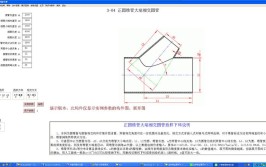// The new built-in function allocates memory. The first argument is a type,// not a value, and the value returned is a pointer to a newly// allocated zero value of that type.//内建函数new分配内存其第一个实参为类型,而非值其返回值为指向该类型的新分配的零值的指针func new(Type) Type可以看出,它的参数是一个类型,返回值是指向该类型的内存地址的指针,并且分配的内存将被设置为零,即该类型的零值,即字符为空,整数为0,逻辑值为false看一些例子type P struct {Name stringAge int}var a [2]intvar s stringvar b boolvar i intvar ps Pa = new([2]int)s = new(string)b = new(bool)i = new(int)ps = new(P) //structurefmt.Println(a, " ", a)fmt.Println(s, " ", s)fmt.Println(b, " ", b)fmt.Println(i, " ", i)fmt.Println(ps, " ", ps)输出如下:&[0 0] [0 0]0xc0000821e0 0xc0000a409a false0xc0000a40b0 0&{ 0} { 0}上面基础类型,我们看一下slice, map and channel类型是如何操作的://map 操作 var mp map[string]string mp = new(map[string]string)//注释掉下面的行,new map 返回为nil,直接使用会panic //mp = make(map[string]string) // if this line is omitted, it will pan "Pan: assignment to entry in nil map"“ (mp)["name"] = "lc" fmt.Println((mp)["name"]) // slice 操作 var ms []string ms = new([]string) // 注释掉下面的行访问的时候会下标超出范围 //ms = make([]string,5) // if this line is deleted, it will "panic: runtime error: index out of range" (ms)[0] = "lc" fmt.Println((ms)[0])从上面可以看出,silce,map,channel和其他类型是引用类型当引用类型初始化为nil时,不能直接分配nil,也不能使用new来分配内存,还需要使用make来进行分配make的使用介绍:我们看一下make的定义/ /The make built-in function allocates and initializes an object of type// slice, map, or chan (only). Like new, the first argument is a type, not a// value. Unlike new, make's return type is the same as the type of its// argument, not a pointer to it. The specification of the result depends on// the type:// Slice: The size specifies the length. The capacity of the slice is// equal to its length. A second integer argument may be provided to// specify a different capacity; it must be no smaller than the// length. For example, make([]int, 0, 10) allocates an underlying array// of size 10 and returns a slice of length 0 and capacity 10 that is// backed by this underlying array.// Map: An empty map is allocated with enough space to hold the// specified number of elements. The size may be omitted, in which case// a small starting size is allocated.// Channel: The channel's buffer is initialized with the specified// buffer capacity. If zero, or the size is omitted, the channel is// unbuffered.//切片:size指定了其长度该切片的容量等于其长度切片支持第二个整数实参可用来指定不同的容量; 它必须不小于其长度,因此 make([]int, 0, 10) 会分配一个长度为0,容量为10的切片//映射:初始分配的创建取决于size,但产生的映射长度为0size可以省略,这种情况下就会分配一个小的起始大小//通道:通道的缓存根据指定的缓存容量初始化若 size为零或被省略,该信道即为无缓存的func make(t Type, size ...IntegerType) Type可以看出,它返回的是类型本身而不是指针类型,因为make只能为slice,map,channel等初始化内存,并且它们返回引用类型,因此不必返回指针让我们看一些make的例子: mm :=make(map[string]string) mm["name"] = "lc" fmt.Println(mm["name"]) mss :=make([]int,2) mss[0] = 100 fmt.Println(mss[0]) ch :=make(chan int,1) ch <-100 fmt.Println(<-ch)总结:make仅用于分配和初始化slice,map和chan类型的数据new可以分配任何类型的数据new分配返回一个指针,即Type Typemake返回一个引用,该引用为Type由make分配的空间之后,清除并初始化由new分配的空间
(图片来源网络,侵删)








0 评论